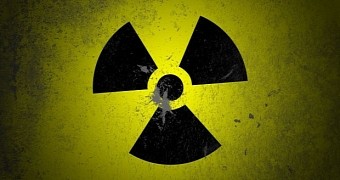In March 2011, Japan's Fukushima nuclear power plant was hit by a 9.0-magnitude tremor and a subsequent tsunami. Following these natural disasters, three of the facility's six reactors suffered a meltdown and spilled massive amounts of radioactive material.
Together with the Chernobyl catastrophe in April 1986, this meltdown at the Fukushima power plant counts as one of the absolute worst nuclear accidents in history.
Media agencies in Japan now say that, according to a leaked report authored by researchers with the International Atomic Energy Agency, the March 2011 Fukushima disaster could have been prevented, had the plant's operator bothered to secure the facility.
The report in question, set to be reviewed in June and officially released in September, is said to accuse plant operator Tokyo Electric Power Co. of having failed to make sure that the facility could withstand an earthquake and a tsunami.
Furthermore, International Atomic Energy Agency experts say that Tokyo Electric Power Co. was fully aware that the plant was vulnerable to such natural disasters and yet did nothing about it, Japan Times details.
“The Fukushima Daiichi NPP (nuclear power plant) had some weaknesses which were not fully evaluated by a probabilistic safety assessment, as recommended by the IAEA [International Atomic Energy Agency] safety standards,” the report reads.
It's not just Tepco that the report points the finger at
In their analysis, International Atomic Energy Agency experts detail that investigations carried out between 2007 and 2009 warned that a tremor with a magnitude greater than 8 could strike off the coast of Japan's Fukushima prefecture.
The same investigations revealed that, should such a quake happen, it could give rise to a tsunami standing about 15 meters (nearly 50 feet) tall and herd it in the direction of the nuclear power plant.
Rather than take these warnings into consideration, Tokyo Electric Power Co. argued that further studies were needed and stuck to its usual working agenda. The country's Nuclear and Industrial Safety Agency supported its decision.
“Tepco did not take interim compensatory measures in response to these increased estimates of tsunami height, nor did NISA [the Nuclear and Industrial Safety Agency] require Tepco to act promptly on these results,” says the International Atomic Energy Agency's report.
Presently, Tokyo Electric Power Co. is working on recovering the radioactive materials still stored inside the crippled nuclear power plant and delivering them to a safe location. It has until now cleared the facility's Reactor No. 4.
Following the Fukushima incident, all the other nuclear reactors in Japan were shut down. What's somewhat disconcerting is that, despite public opposition and outcry, Japan's officials are steadily but surely reviving the country's nuclear power industry.
Three nuclear energy facilities have until now been granted permission to restart, and Japanese Prime Minister Shinzo Abe hopes that, come 2030, nuclear will account for about 20 to 22% of the country's overall electricity mix.

 14 DAY TRIAL //
14 DAY TRIAL //